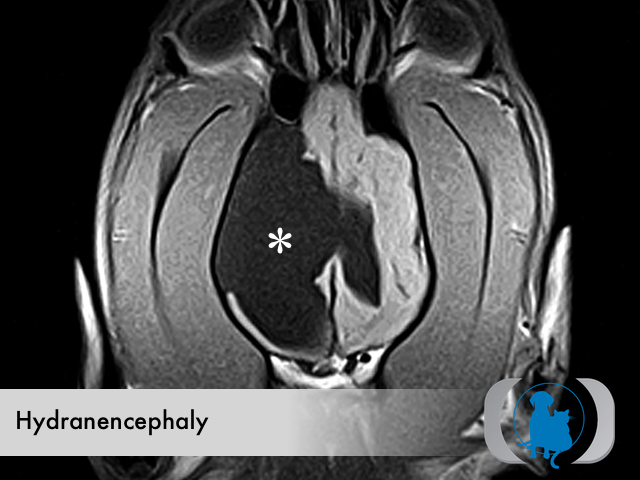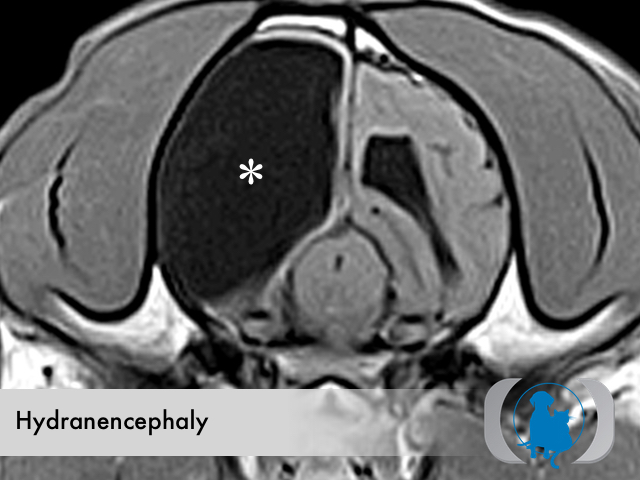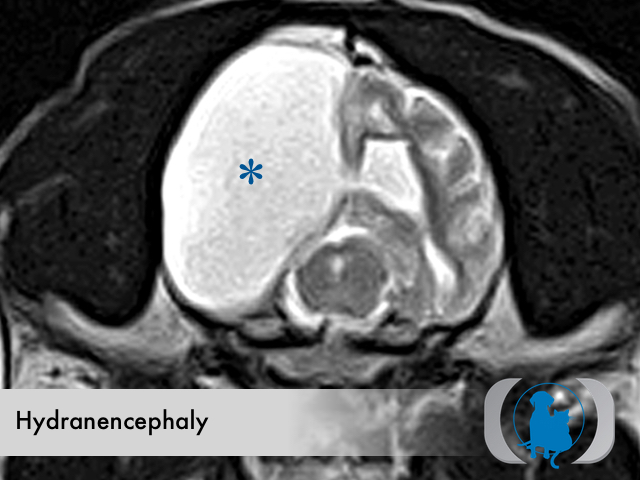Etiology
Hydranencephaly is a congenital malformation of the brain in which the cerebral hemisphere(s) are absent to varying degrees. Hydranencephaly is an extreme form of porencephaly, a condition in which large cystic regions develop within the cerebral hemispheres.
Pathophysiology
The abnormal development of, or damage to, the cerebral hemispheres in the fetus result in the absence of these tissues in the individual at birth. The rigid nature of the cranial vault leads to the space vacated by the cerebral hemispheres being filled (ex vacuo) with cerebrospinal fluid. In calves and lambs this condition occurs secondary to exposure to the bluetongue virus. Other viruses associated with hydranencephaly in large animals include bovine viral diarrhea virus, and the Akabane virus. Feline panleukopenia has been implicated as a cause of hydranencephaly in kittens.
Clinical Signs
The clinical signs demonstrated vary widely with the degree of remaining cerebral tissue. Symptoms range from visual deficits and/or seizures to severe lethargy, circling and head pressing.
Diagnostic Tests
While ultrasound evaluation has the potential to provide useful information in patient's with persistent fontanelles, further advanced imaging (ideally MRI with lesser utility for CT) is necessary to define the extent of the condition.
Therapy
Therapy is entirely symptomatic and supportive. Antiseizure medications may prove useful in controlling seizures. Most cases demonstrate stable clinical signs following diagnosis.
Image Gallery





